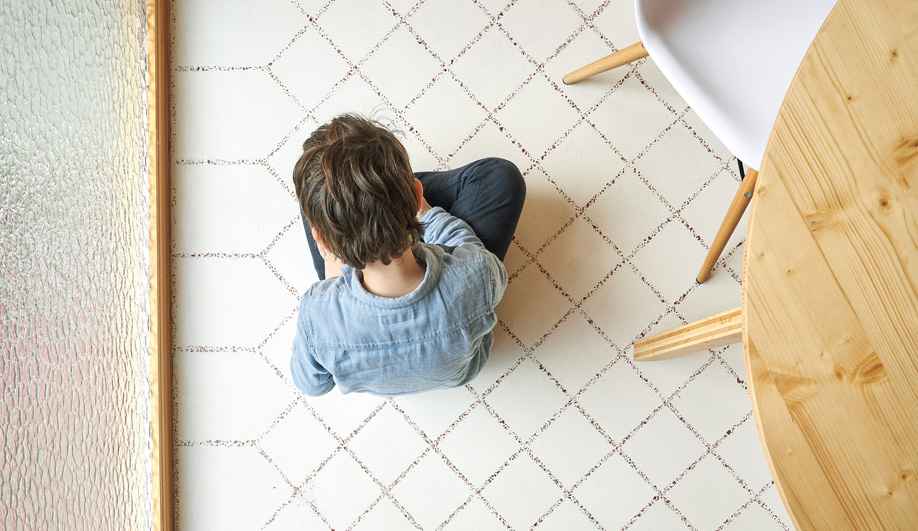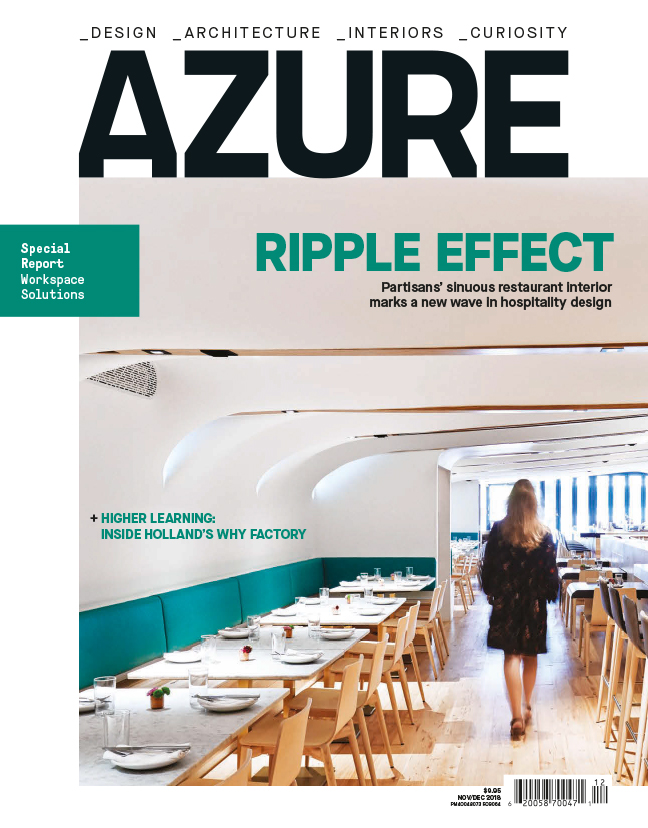
The owners of a Spanish tile brand amp up new floors in their own Barcelona apartment with a bespoke terrazzo mortar.
In Spain, tile-spotting is a veritable tourist activity. In particular, Barcelona’s sidewalks – covered in patterned panot paving tiles designed by celebrated Catalan architects of past and present – are an ode to the material: Antoni Gaudí’s oceanic hexagons, among the city’s most famous, create an abstract vista of sea creatures along the Passeig de Gràcia.

Spain is also the birthplace of modern hydraulic tiles, which first appeared in Catalonia in the 1850s. Add that legacy to the country’s enduring palette of bold geometric shapes and terracotta and you have the driving force behind the home of Laia Herrera and Biel Huguet, owners of the Mallorca-based tile brand Huguet. The couple’s 65-square-metre flat in Barcelona’s Gràcia district is a dynamic salvaging project marrying old and new. “We always try to work from legacy and the knowledge that tradition gives us,” says Jaume Mayol of TEd’A arquitectes, which led the refurbishment of the interior.

Given that Herrera and Huguet are purveyors of hydraulic tiles, cement was sure to be a primary component of the space. The apartment’s sprawling tiled floor (featuring Huguet products, natch) lends a cool cantina atmosphere and essential Mediterranean feel. But it’s the terracotta-speckled grout that truly shines.

The bespoke mortar is made using the home’s original red-clay tilework, a feature that had a strong presence in the space but over time was damaged beyond repair. To preserve its essence, the tiles were ground to a multi-sized aggregate and combined with white plaster – a technique that Huguet and TEd’A developed in tandem in 2017. The result is a polished terrazzo grout that may well be the world’s first. “This tile has a memory,” Mayol notes. “It accepts its pre-existing conditions and proposes to transform them.”

The apartment’s other standout intervention is an endless spruce wardrobe, stretching from floor to ceiling. It travels from one end of the home to the other, turning corners and winding between spaces. It not only breaks up an otherwise bi-chromatic palette of white and red, but divides the original three rooms into six, adding a dining area, living room and study.

Singular gestures define this calm, poetic space: flooring that moves from room to room, a storage system that connects divergent areas. “We prefer evolution to revolution,” Mayol says. “Every decision has to be coherent with the previous one. Our process runs from the first line of the project until the very last stone.”

This story was taken from the November/December 2018 issue of Azure. Buy a copy of the issue here, or subscribe here.
